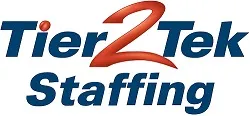SAP Recruitment Firm

SAP Staffing Solutions for Your Business Needs
Tier2Tek Staffing specializes in SAP staffing, connecting you with skilled professionals to optimize your ERP systems. Our expert recruiters find the right talent for various SAP roles, including SAP HANA, FICO, and ABAP, ensuring you get the expertise needed to enhance your business processes. We focus on understanding your specific needs and aligning candidates with your company’s goals for long-term success. From sourcing to placement, we support you throughout the hiring process. Ready to improve your ERP systems with top SAP talent? Work with us to achieve your business objectives.
SAP Developer Job Description
As an SAP Developer, you will be responsible for designing, developing, and implementing SAP solutions that meet business requirements. This role involves working closely with stakeholders to ensure the SAP system is optimized for performance and aligned with business goals.
Responsibilities:
- Design and develop custom SAP solutions using ABAP and other SAP tools.
- Collaborate with business analysts and stakeholders to gather and understand requirements.
- Implement and configure SAP modules to enhance business processes.
- Troubleshoot and resolve issues within the SAP system.
- Maintain and upgrade existing SAP solutions to improve efficiency.
Qualifications:
- Bachelor’s degree in Computer Science, Information Systems, or a related field.
- Proven experience in SAP development and implementation.
- Strong understanding of SAP modules and ABAP programming.
- Experience with SAP integration and data migration.
Skills:
- Familiarity with SAP best practices and system architecture.
- Proficiency in SAP development tools and ABAP programming.
- Strong problem-solving and analytical skills.
- Excellent communication and teamwork abilities.
- Ability to work independently and manage multiple projects.
